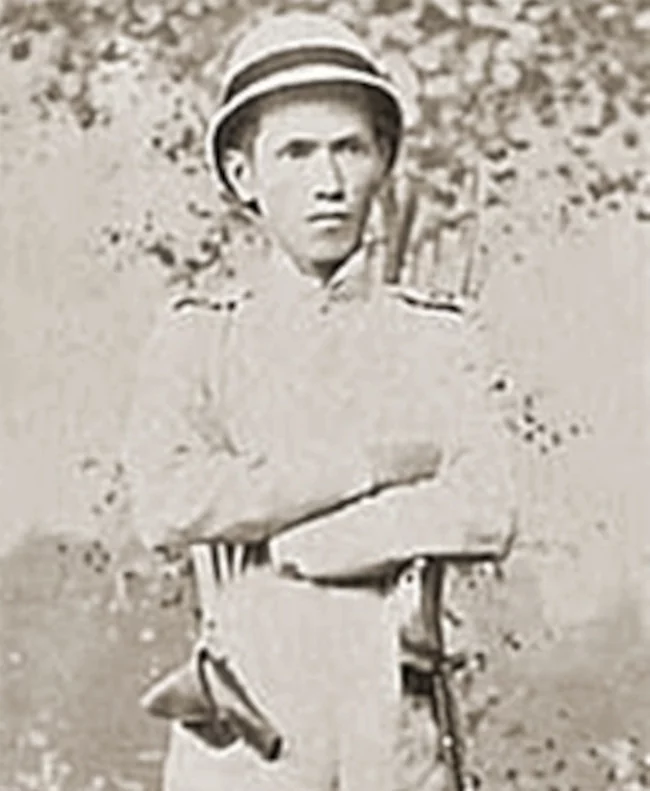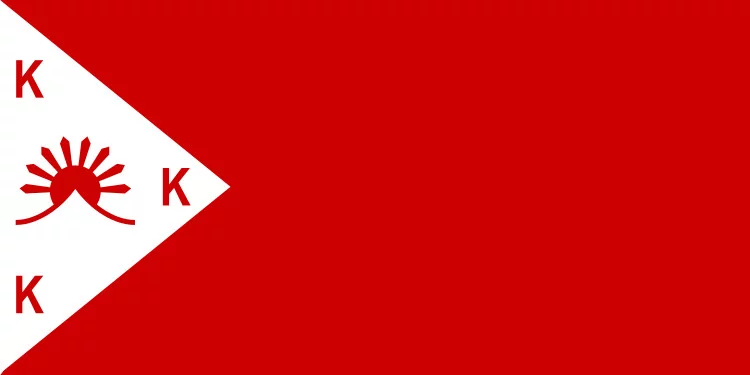Today in Philippine history, July 11, 1860, Pío del Pilar, a revolutionary general was born in Culi-culi, San Pedro de Macati
On July 11, 1860, Pío del Pilar was born Pío Isidro y Castañeda in Barrio Culi-culi (present day Pio del Pilar), San Pedro de Macati (now Makati City) to Isaac del Pilar, a farmer from Pasay, and Antonia Castaňeda, an embroider from Mandaluyong.

As a child, his parents had him study for two years in the school of Pascual Rodriguez, and for four months under Ramon Renaldo, until he was forced to stop to work in the family farm. Typical of other Filipinos at the time, del Pilar knew little or no Spanish, but was fluent in Tagalog.
Pio married his childhood friend, Juliana Valeriano, at the age of 17, the same year he was forcibly conscripted into the Spanish army. He was assigned in Mindanao for a year but was cut to four months by the intervention of a family friend. To avoid further grief from the Spaniards, his father changed the family name to del Pilar, an unwise choice since that name would soon sow trouble from the famous dissident Marcelo H. del Pilar and General Gregorio del Pilar.
In 1890, del Pilar was appointed cabeza de barangay and later on, became teniente del barrio in Makati. During this time, he had a chance meeting with Jose Rizal, and was inspired to distribute copies of his novel, Noli Me Tangere.
In May 1896, he joined the Katipunan and formed a chapter called Matagumpay, taking the symbolic name Pang-una. His chapter also adopted a flag, a white triangle with a K at each corner, at the hoist of a red field, in the center of which was a mountain with a rising sun on it. This flag was known as the Bandila ng Matagumpay (Flag of the Triumphant) and was del Pilar's personal standard during the revolution.
At the outbreak of the Philippine Revolution, del Pilar was arrested by Spanish authorities for suspected membership in the Katipunan. Although tortured, he did not reveal any secrets about the Katipunan until he was released.
Del Pilar participated in his first battle in Mandaluyong on August 29, 1896. He also led a group of rebels in the Battle of Binakayan on November 9, 1896, capturing the town from Spanish authorities.
On February 16, 1897, bearing the rank of colonel, del Pilar defended Bacoor and Las Piñas. Subsequently, he was promoted to brigadier-general.

Del Pilar was present in the Tejeros Convention on March 22, 1897, which marked the split between the Magdiwang and Magdalo factions of the Katipunan. Because of the events of the Convention, he aligned himself with Bonifacio, eventually signing the Naic Military Agreement declaring the results of the convention to be null and void. In time, however, he switched sides, aligning himself with the Magdalo faction and becoming one of Emilio Aguinaldo's trusted generals. It was del Pilar along with General Mariano Noriel, that advised Aguinaldo to change the commutation (banishment) to execution of Andres and Procopio Bonifacio.
In September 1898, the Philippine Republic moved its headquarters to Malolos, inaugurated its congress and republican government under a Constitution. It also made General Pio del Pilar a member, the only former farmboy among the ilustrados, scientists, scholars, land-owners. He was the only representative of the emerging "masa."
After February 4, 1899 when the first battle of the Filipino-American War broke out, Pio and his men were considered by the Americans as "the most arrogant and the most hated." Pio was everywhere; skirmishes flared at Manila, at Bulacan, Morong, Antipolo, Malapad na Bato (Fort Bonifacio City) at Guadalupe in Makati, Pasig, Pateros, Cainta, and Bulacan.
His last battle with the Americans was in the town of Morong. He fought bravely but he and his men were defeated and captured.
Del Pilar was exiled to Guam along with Apolinario Mabini, Artemio Ricarte, and other Filipino patriots.
He returned to the Philippines after Governor William Howard Taft extended pardons to the revolutionaries.
He continued to fight for the cause of the Filipino people by supporting the Jones Bill for Filipinos' preparation for self governance.
He died on June 21, 1931 due to lingering illness.
Source:
- Pio del Pilar, Wikipedia
- Makati's hero, Arts and Culture, Carmen Guerrero Nakpil, Philstar Global, November 9, 2009

No comments:
Post a Comment